Outdoors Border-1
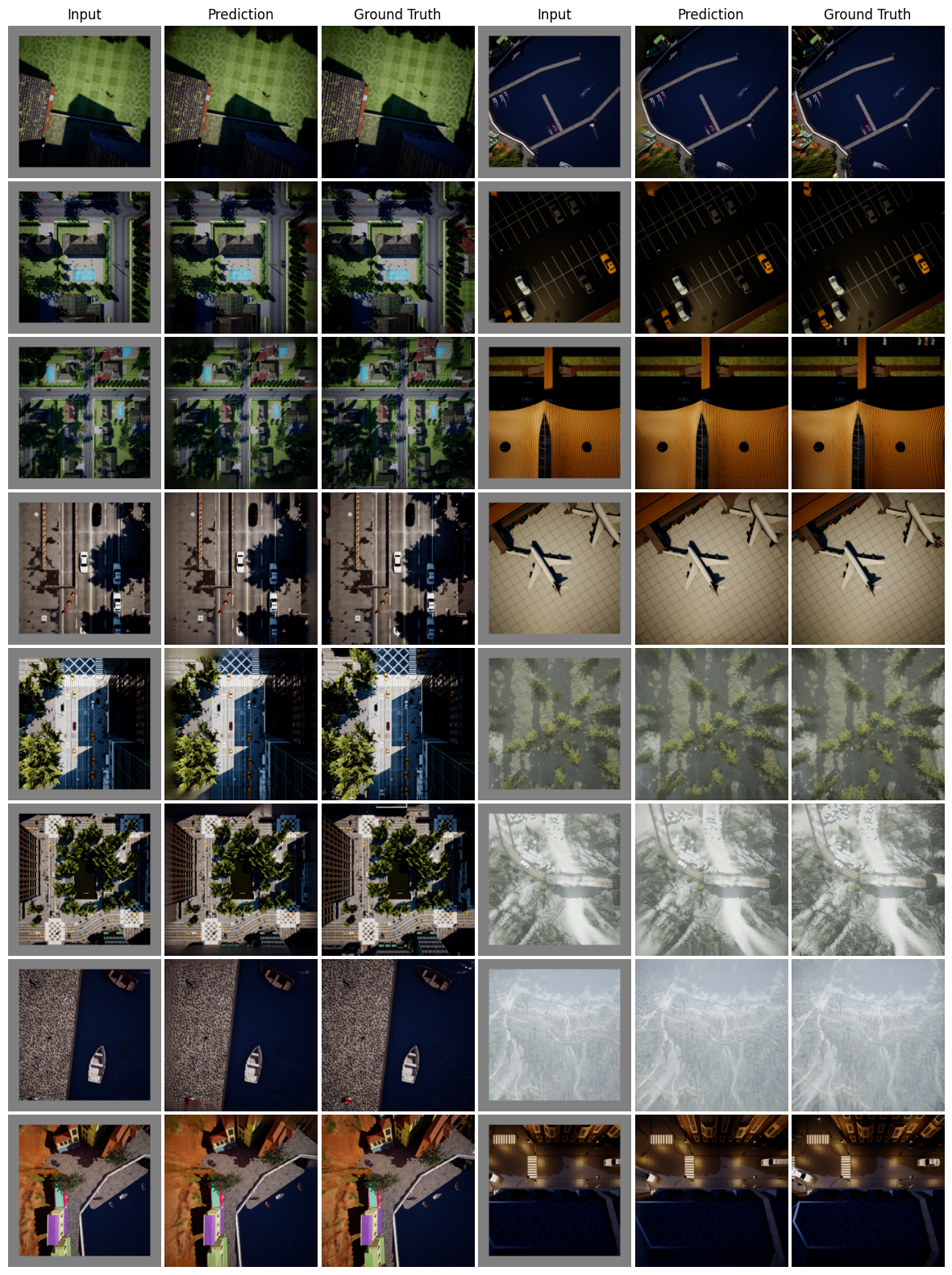

Robotic systems are often limited by their sensor Field of View (FOV), which makes collision-free navigation and exploration in an unknown environment challenging. In contrast, humans are better at it because they can use their prior knowledge and consider the information beyond the FOV. What if robots could do it too? In our proposed approach, we aim to enhance the intelligence of robots by utilizing pre-trained masked autoencoders to make predictions of expanded FOV and synthesis a novel view. This allows the robot to reason and make informed decisions for safe and efficient navigation in unknown environments. We demonstrate the effectiveness of computer vision algorithms, specifically masked autoencoders, in solving practical robotics problems without the need for fine-tuning by using only top-down images. Our approach is evaluated in both indoor and outdoor environments, showcasing its performance in various settings of RGB, semantic segmentation, and binary images.
We use a pre-trained Masked Autoencoder (MAE), trained on ImageNet dataset, to increase the FOV of the top-down images in various settings. The additional field is used as a masked region in the input to MAE and the output of the MAE is added to the original masked input. We vary the extent of masking to study the efficacy of MAE prediction.
We evaluate prediction quality on both indoor and outdoor scenes. Robotic tasks often rely on a variety of modalities for tasks. Keeping this in mind, we study 3 types of input modalities: (1) RGB images, (2) Semantic segmentation maps, and (3) Binary maps (as proxy for occupancy map).
We use VALID dataset for outdoors and AI2-THOR for indoor images in our evaluation.
MAE is pre-trained on RGB images with the dataset consisting mainly of street-view/first-person view images. The results here answer if they can be used effectovely on top-down images.

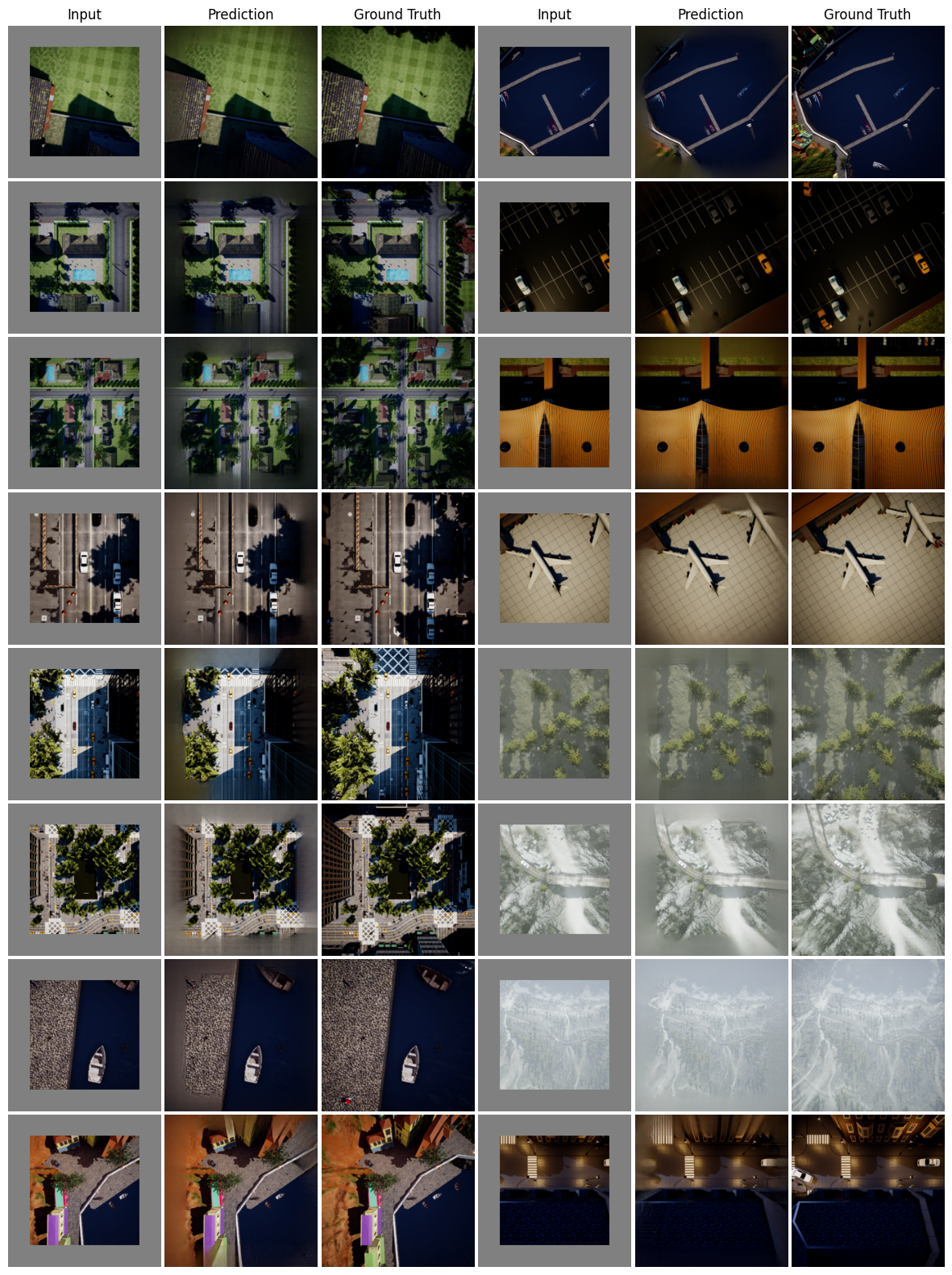
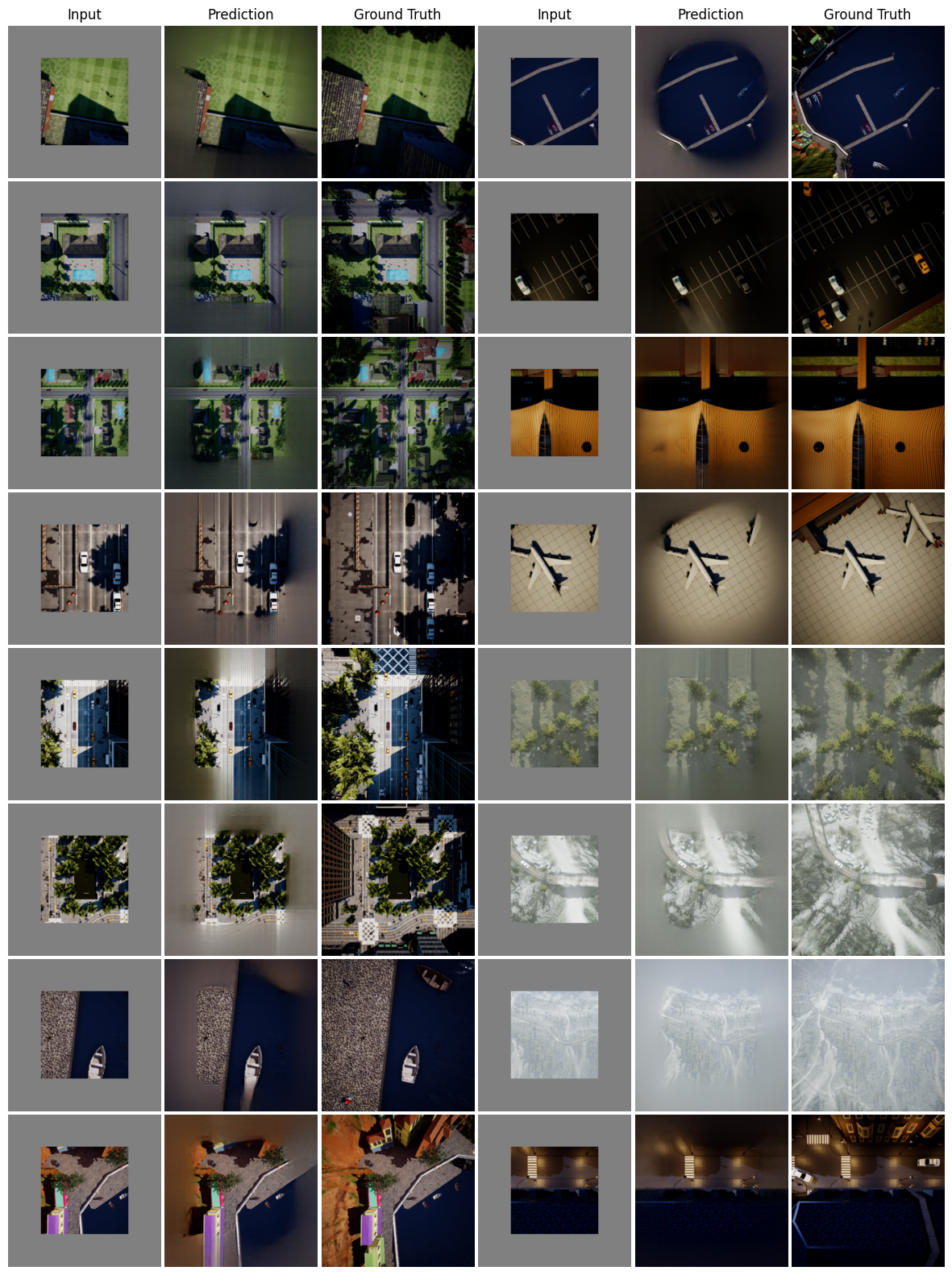

MAE is pre-trained on RGB images and can work well on top-down RGB images as well. We further examine if this performance can be repeated on semantic segmentation maps by treating them as RGB images.
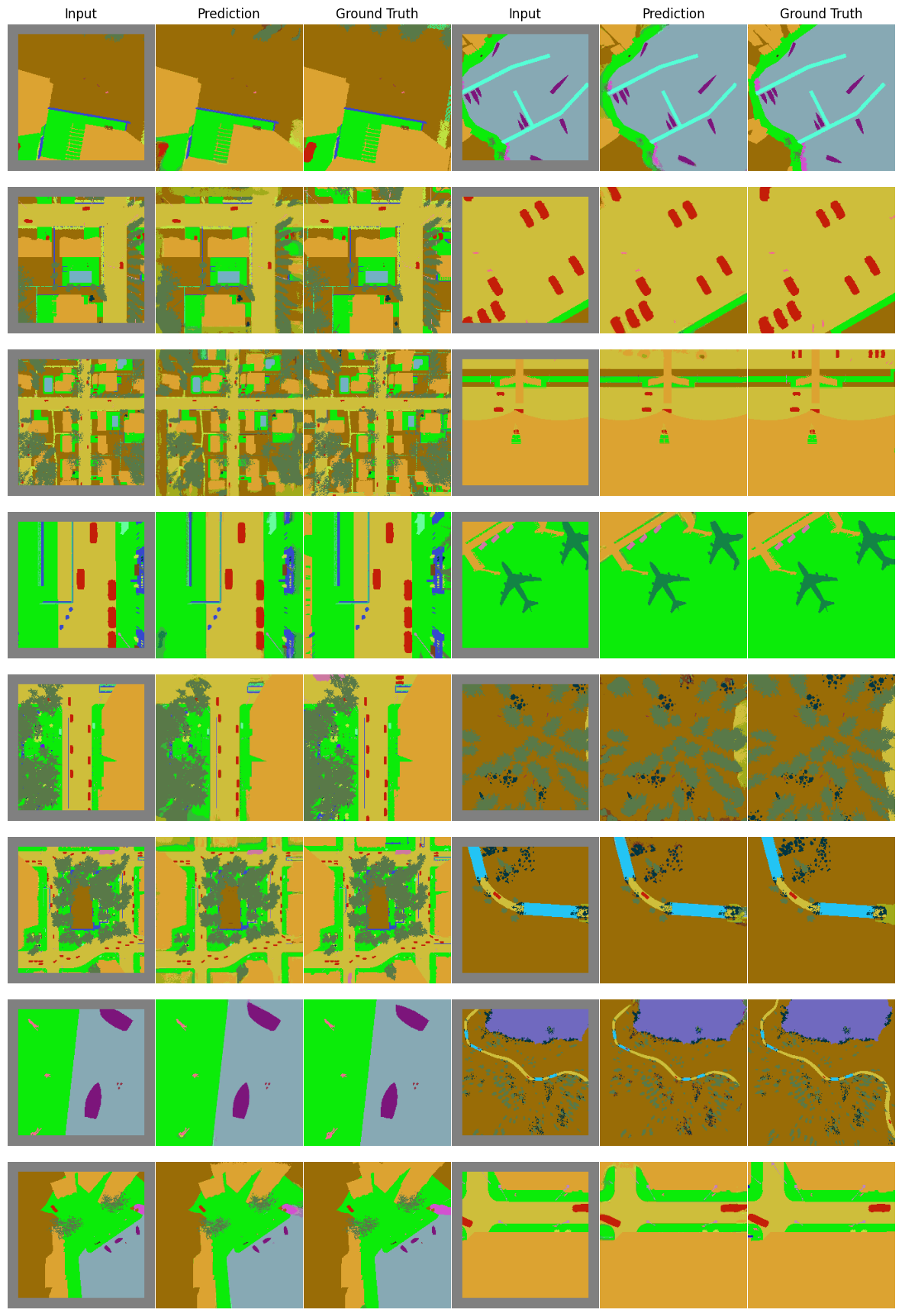
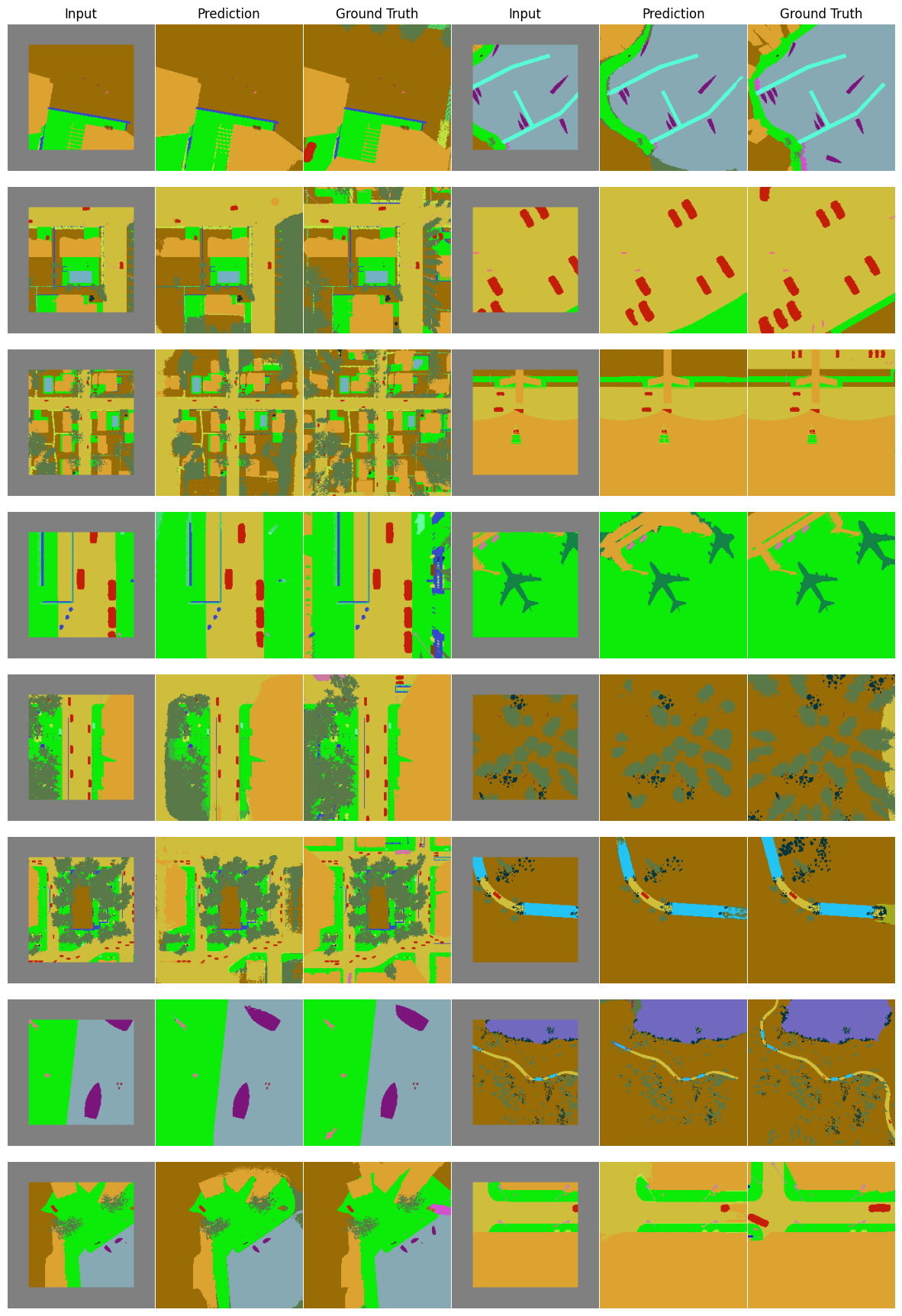
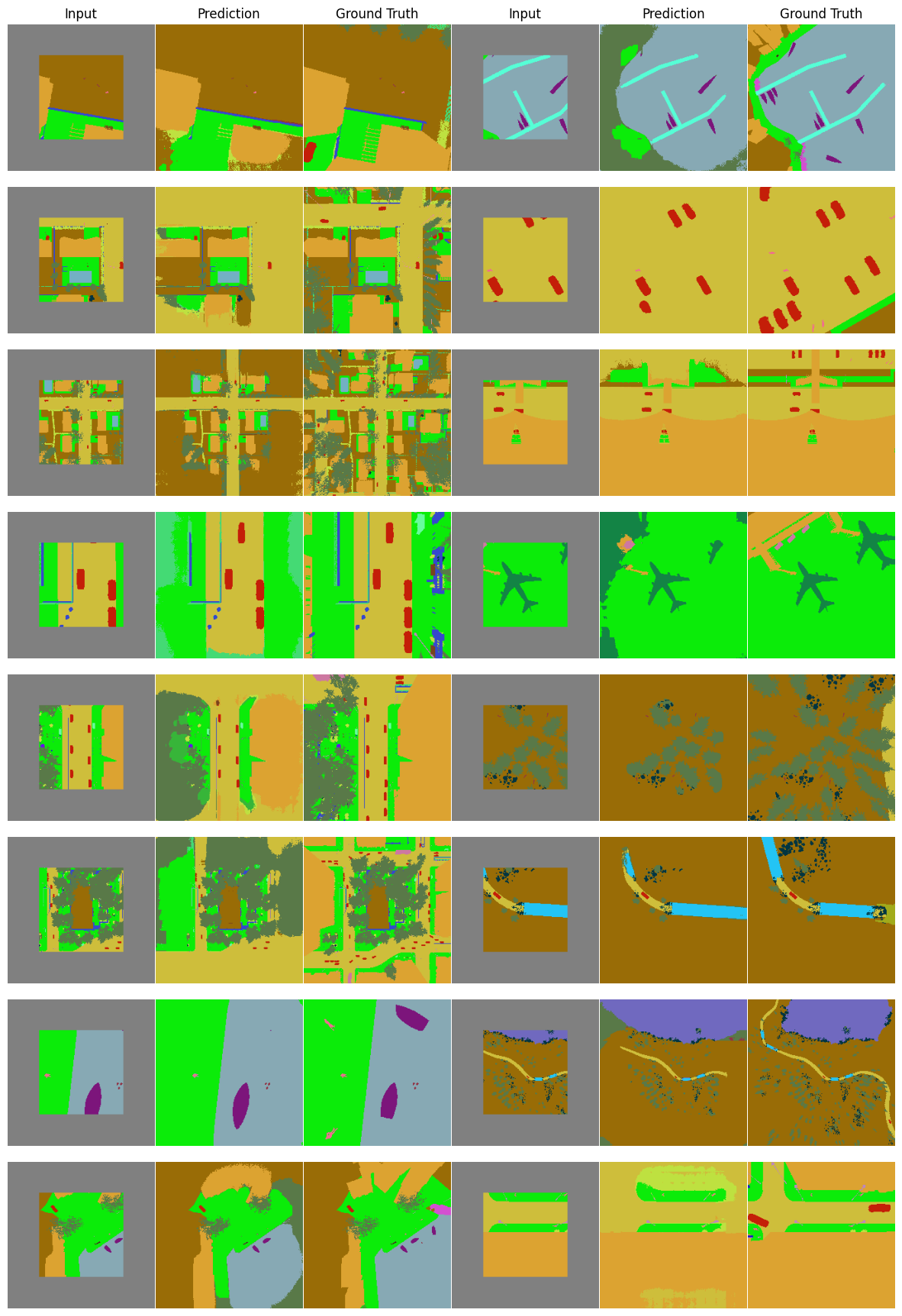

Binary maps are skin to occupancy maps and represent a low-fidelity representation of navigation maps. We use them as RGB images as well and find out MAE performs on them. In the binary maps shown below we use bright regions to represent navigable regions.
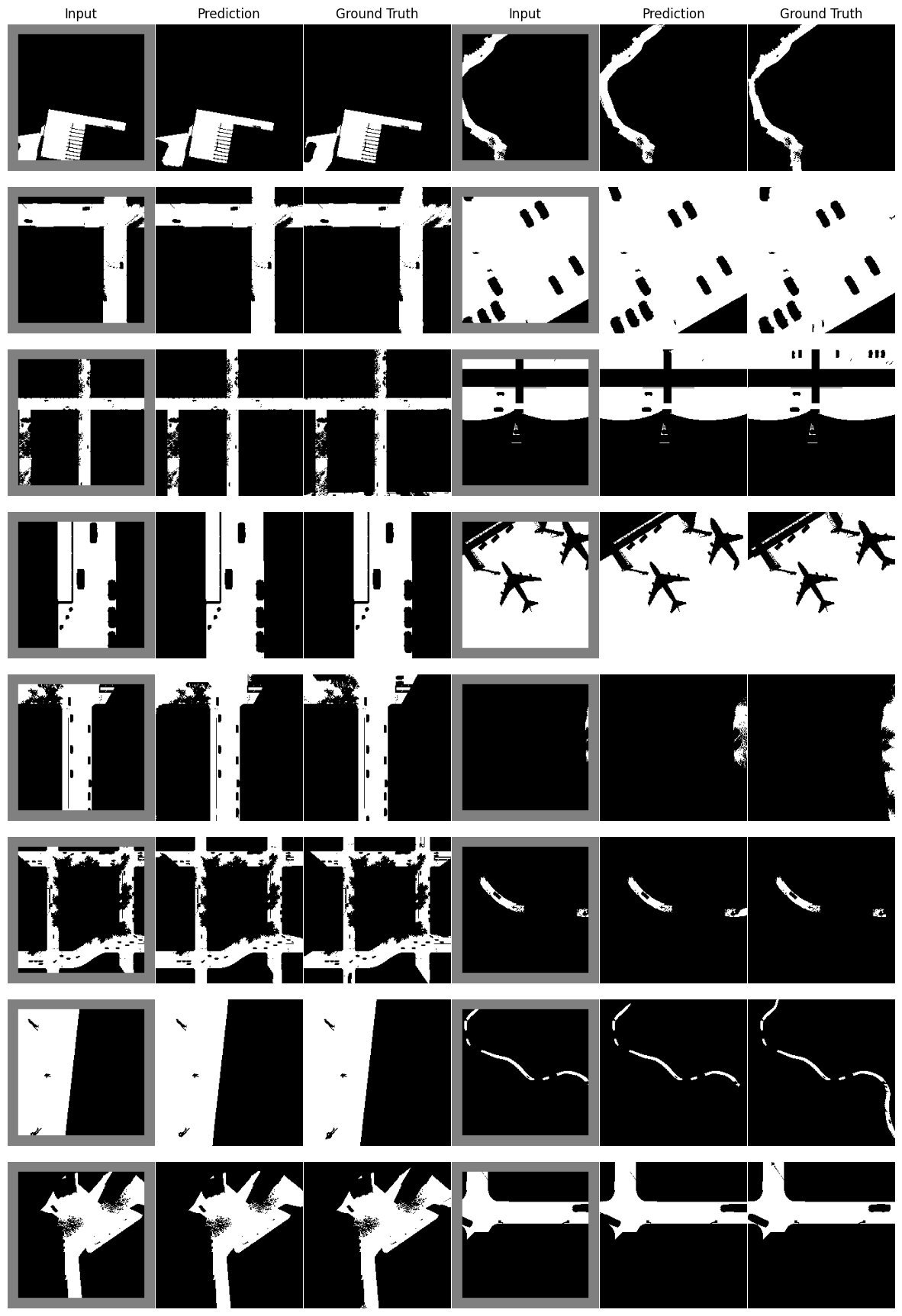
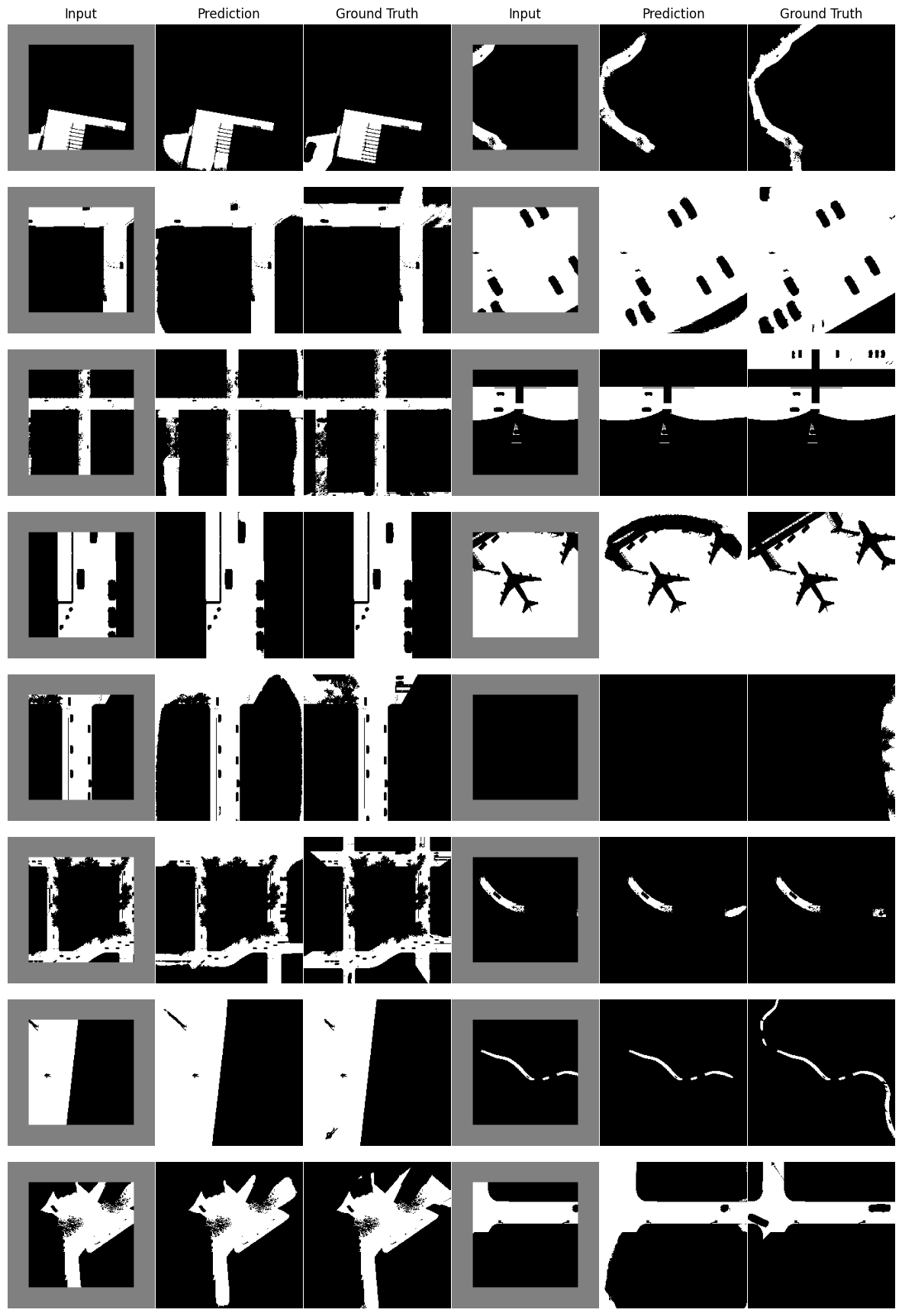
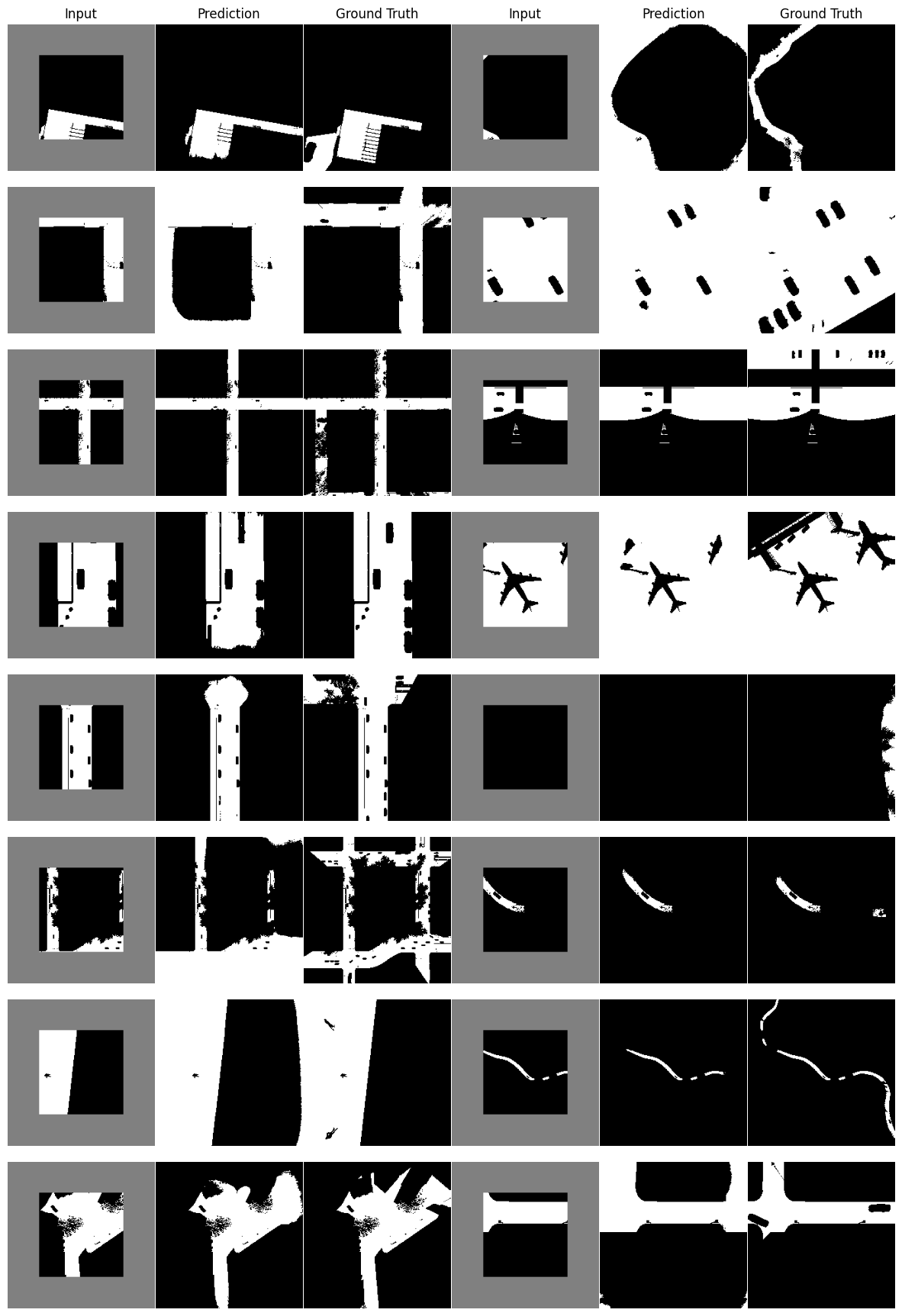
Table 1: Increasing the FOV in RGB images
| Environment | Masking | FID | SSIM | PSNR | MSE |
|---|---|---|---|---|---|
| Border-1 | 17.83 | 0.94 | 27.76 | 13.76 | |
| Indoor | Border-2 | 41.79 | 0.86 | 22.23 | 32.42 |
| Border-3 | 76.59 | 0.78 | 19.18 | 52.98 | |
| Border-1 | 53.66 | 0.84 | 26.38 | 33.59 | |
| Outdoor | Border-2 | 77.91 | 0.69 | 22.79 | 49.91 |
| Border-3 | 116.09 | 0.55 | 19.98 | 67.80 |
Table 2: Increasing the FOV in Semantic segmentation maps
| Environment | Masking | mIoU | FID | SSIM | PSNR |
|---|---|---|---|---|---|
| Border-1 | 0.86 | 43.48 | 0.94 | 23.06 | |
| Indoor | Border-2 | 0.55 | 75.42 | 0.84 | 17.33 |
| Border-3 | 0.34 | 110.01 | 0.78 | 14.90 | |
| Border-1 | 0.90 | 42.63 | 0.94 | 25.96 | |
| Outdoor | Border-2 | 0.73 | 73.03 | 0.86 | 21.39 |
| Border-3 | 0.57 | 118.56 | 0.79 | 18.80 |
Table 3: Increasing the FOV in Outdoors Binary maps
| Masking | mIoU | FID | SSIM | PSNR |
|---|---|---|---|---|
| Border-1 | 0.90 | 51.87 | 0.95 | 30.36 |
| Border-2 | 0.78 | 88.44 | 0.76 | 22.05 |
| Border-3 | 0.64 | 120.94 | 0.56 | 17.81 |
MAE are trained similar inpainting networks, and thus have the potential for inpainting. We use this capability to present a use-case where it could be used to remove unwanted objects from top-down images (RGB, segmentation, or binary maps). This could be useful for a team of heterogeneous robots (UAV-UGB), or for offline data curation.
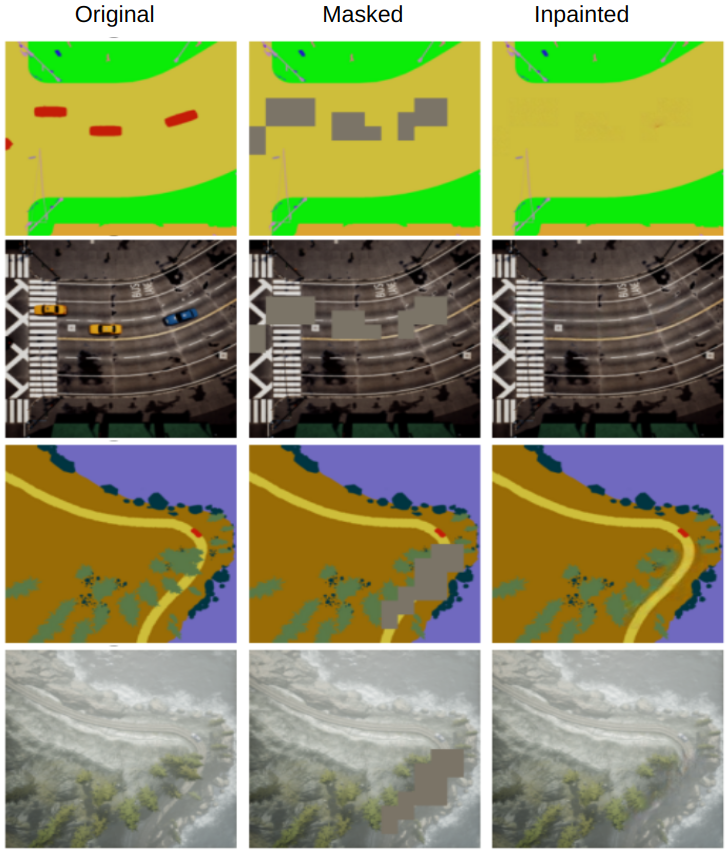
Uncertainty estimation in predictions can be used for safe deployemnt and guided exploration and navigation of mobile robots. MAEs are deterministic networks and are not trained with dropouts. We extract prediction uncertainty in MAEs by perturbing input images with random noise (similar to adverserial attack) and quntify the average variace across channels as the uncertainty.

We try increasing FOV over the costmap generated by a Hokuyo scanner (270-degrees FOV) mounted on a Turtlebot2 (thr robot is moving towards right in thr images below). The results are encouraging and will be explored further in future.
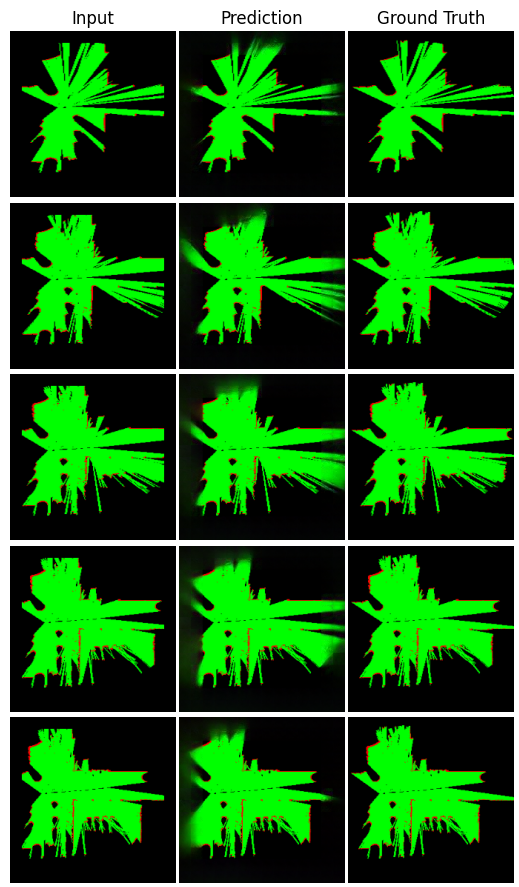
Masked Autoencoders Are Scalable Vision Learners. Kaiming He, Xinlei Chen, Saining Xie, Yanghao Li, Piotr Dollár, Ross Girshick. CVPR 2022.
VALID: A Comprehensive Virtual Aerial Image Dataset. Lyujie Chen, Feng Liu, Yan Zhao, Wufan Wang, Xiaming Yuan, Jihong Zhu. ICRA 2022. (Dataset Link)
AI2-THOR: An Interactive 3D Environment for Visual AI. Eric Kolve, Roozbeh Mottaghi, Winson Han, Eli VanderBilt, Luca Weihs, Alvaro Herrasti, Matt Deitke, Kiana Ehsani, Daniel Gordon, Yuke Zhu, Aniruddha Kembhavi, Abhinav Gupta, Ali Farhadi. (Simulator Link)
@article{fliptd,
author = {Singh, Anukriti and Sharma, {Vishnu Dutt} and Tokekar, Pratap},
title = {FLIP-TD: Free Lunch Inpainting on Top-Down Images for Robotic Tasks},
journal = {arXiv},
year = {2023},
}